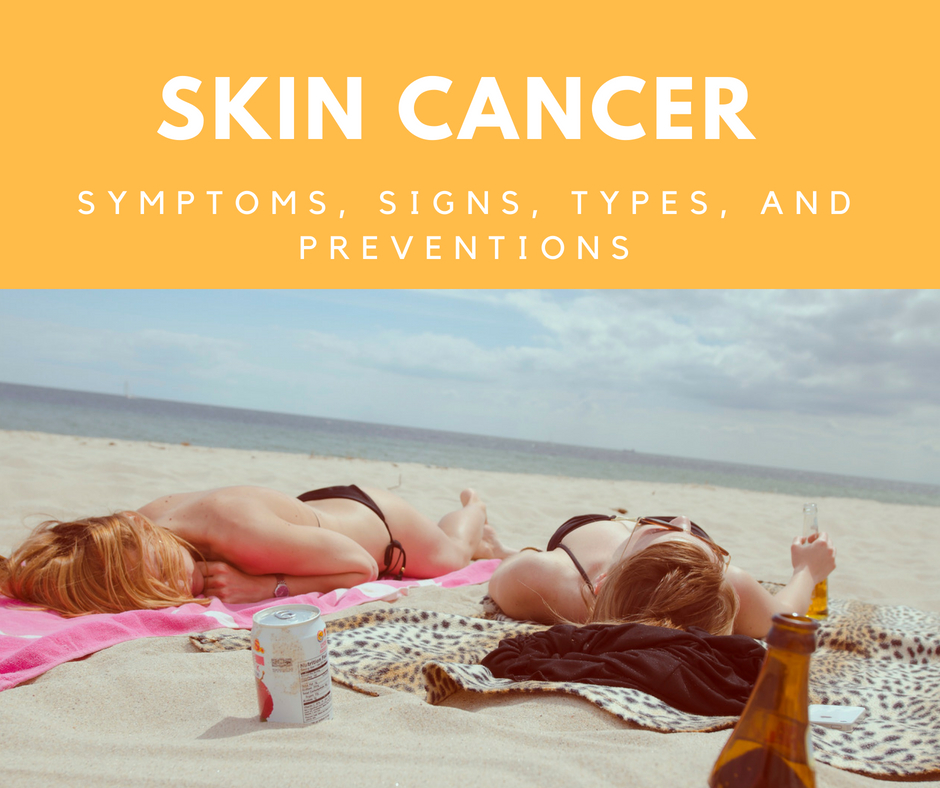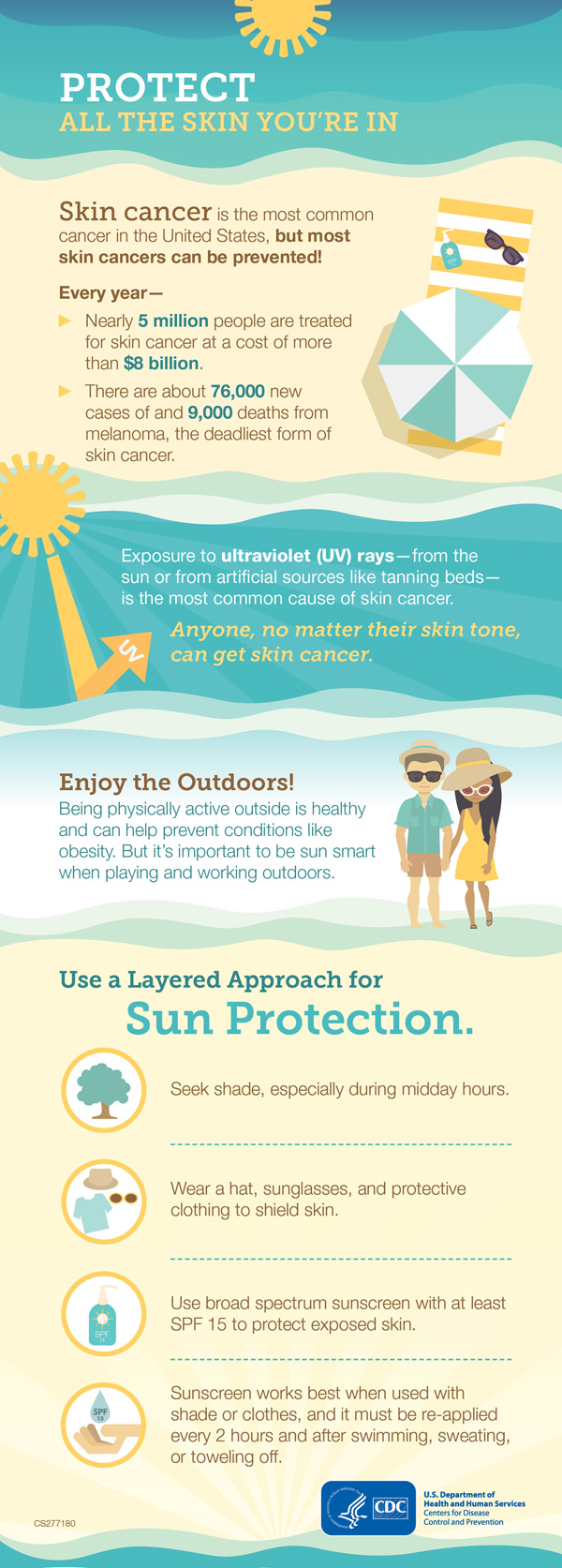
Skin Cancer: Symptoms, Signs, Types, and Preventions

What is Skin Cancer?
Skin cancer is the most common cancer in the United States, and includes three different types. The two most common types of skin cancer—basal cell and squamous cell carcinomas—are highly curable, but can be disfiguring and costly to treat. Melanoma, the third most common skin cancer, is more dangerous and causes the most deaths. The majority of these three types of skin cancer are caused by overexposure to ultraviolet (UV) light.
Ultraviolet (UV) rays are an invisible kind of radiation that comes from the sun, tanning beds, and sunlamps. UV rays can penetrate and change skin cells. In addition to causing sunburn, too much exposure to UV rays can change skin texture, cause the skin to age prematurely, and can lead to skin cancer. UV rays also have been linked to eye conditions such as cataracts.
Unprotected skin can be damaged by the sun’s UV rays in as little as 15 minutes.Even if it’s cool and cloudy, you still need protection. UV rays, not the temperature, do the damage.
What Are the Risk Factors for Skin Cancer?
Anyone can get skin cancer, but people with certain risk factors are more likely than others to develop skin cancer. Risk factors vary for different types of skin cancer, but some general risk factors are having—
- A lighter natural skin color.
- Family history of skin cancer.
- A personal history of skin cancer.
- Exposure to the sun through work and play.
- A history of sunburns, especially early in life.
- A history of indoor tanning.
- Skin that burns, freckles, reddens easily, or becomes painful in the sun.
- Blue or green eyes.
- Blond or red hair.
- Certain types and a large number of moles.
What Are the Symptoms of Skin Cancer?
A change in your skin is the most common sign of skin cancer. This could be a new growth, a sore that doesn’t heal, or a change in a mole. Not all skin cancers look the same.
A simple way to remember the signs of melanoma is to remember the A-B-C-D-Es of melanoma—
“A” stands for asymmetrical. Does the mole or spot have an irregular shape with two parts that look very different?
“B” stands for border. Is the border irregular or jagged?
“C” is for color. Is the color uneven?
“D” is for diameter. Is the mole or spot larger than the size of a pea?
“E” is for evolving. Has the mole or spot changed during the past few weeks or months?
How to prevent skin cancer?
Follow sun safety recommendations below, to help protect yourself and your family.

Learn more about:
The National Weather Service and the Environmental Protection Agency developed the UV Index to forecast the risk of overexposure to UV rays. It lets you know how much caution you should take when spending time outdoors.
The UV Index predicts exposure levels on a 0 to 15 scale; higher levels indicate a higher risk of overexposure. If the UV index is 3 or higher, sun protection is needed. Calculated on a next-day basis for dozens of cities across the United States, the UV Index takes into account clouds and other local conditions that affect the amount of UV rays reaching the ground.
Source:
CDC


Most Commented